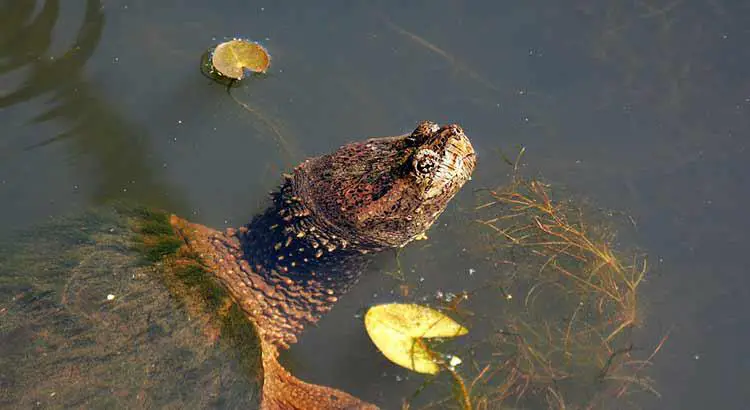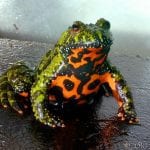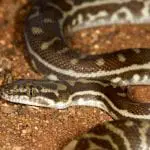Have you tried keeping a turtle as a pet? Turtles are one of the oldest animals in existence, with some even traced back into the Middle Jurassic Era. They are reptiles that are living in the wild, with some species that are kept as pets, too. But, there is a posing question that is asked by many people hearing about them: “Are there poisonous turtles?”
What Makes An Animal Poisonous?
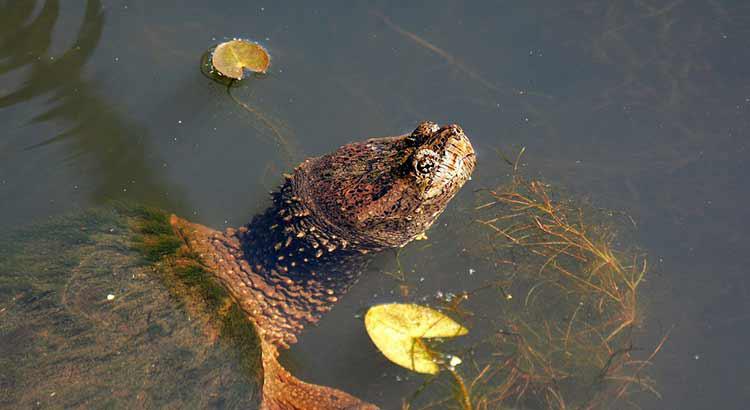
When people discuss animals that are dangerous, they often ask about whether these animals are poisonous. This is because we often link the word ‘poison’ to danger, especially with all the times we hear about it on television and other forms of mass media. However, biologists and scientists want to correct this statement. This is because, if you look at it, most of the animals that are considered as poisonous are actually venomous.
The term ‘venomous’ must be applied to describe animals that bite you or sting you in order to inject their toxins inside your body. On the other hand, the term ‘poisonous’ is used to describe animals that unload toxins whenever humans eat them.
Poisonous animals are most often amphibians, like toads, frogs, and salamanders. Their skin carries toxic poisons that they secrete as a self-defense mechanism. However, venomous animals are most often snakes that transfer their venom through a single bite.
Are There Poisonous Turtles?
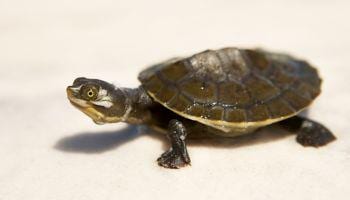
There are no poisonous turtles, and there are no known venomous turtles.
However, there have been reported cases of mortality of having consumed meat from the hawksbill turtles. This specific case occurred in the South Pacific Island of Tonga, where 18 people became sick from eating this hawksbill meat. Out of the 18 sick people, it has been recorded that 2 of them have died due to this problem. Because of this, people from the island test hawksbill turtle meat for poison by throwing the liver of the turtle to the crows. If they see that these birds reject the consumption of the liver, then the hawksbill turtle is proven as something toxic.
But Don’t Celebrate Yet – There’s A Disease That Turtles Can Transmit to Humans
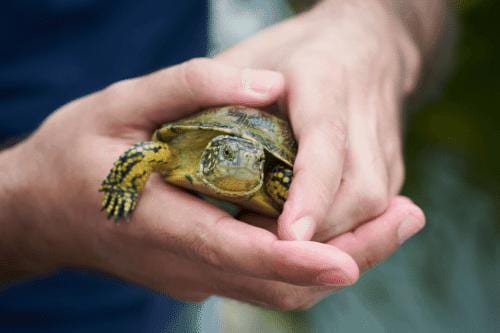
Turtles look so cute, and it can be hard to resist these small glass-eyed creatures. You might think that they are harmless, but that is where you are wrong. Turtles are usually known to carry the Salmonella bacteria on the surface of their shell and their outer skin.
People can, in fact, can get infected with getting Salmonella by coming into contact with amphibians (frogs, newts, and salamanders), reptiles (lizards, snakes, and reptiles), and the habitats of these animals like aquariums, cages, and tanks.
Salmonella can cause people some serious and possibly life-threatening infection in people, even though they cannot necessarily make the animals, whether amphibians and reptiles, get sick.
People who suffer from having Salmonella are known to exhibit symptoms like diarrhea, fever, headache, nausea, stomach pain, and vomiting. It has been studied that these symptoms start showing up at about six to 72 hours after being in contact with the bacteria. It has also been studied to last its effects on the body for about two to seven days.
Some people can recover from Salmonella without receiving any form of treatment, but there are individuals that can become so sick that they require receiving treatment inside the hospital.
Who Can Be At Risk Of Getting Salmonella From Turtles?
Salmonella infections can affect anyone. But, the risk of getting contaminated is the highest in infants, young children, people with compromised immune systems, elderly people, pregnant women, people with cancer, people who have HIV and AIDS, people who have diabetes, and people who have other health concerns.
Based on the Food and Drug Administration’s Center for Veterinary Medicine, all amphibians and reptiles have the high potential to be carriers of the Salmonella infection. This is why if young children come into contact with these turtles, they run the high risk of becoming very ill.
Even if a small turtle does not look like it is sick, the turtle might still be a carrier of Salmonella. The problem with this is, most of the time, children cannot be controlled with how they must protect themselves. Children have the predisposition to put small turtles in their mouths as well as playing around the enclosure of a turtle and then putting their fingers inside their mouths. Also, when the habitats of the turtles are cleaned in the kitchen sink, this can cross-contaminate utensils, food items, and other kitchen tools. Therefore, there is no denying that this will be a serious risk to both the children and the elderly.
If you have turtles at home, it is important to take note of the bare floors, countertops, carpeting, and tabletops and regularly clean them and remove the risk for contamination, especially if the turtles are allowed to roam on them. The problem with these surfaces is that bacteria can survive on them for a very long time. Always remember that hygiene and proper handling are very important in fighting against the spreading of bacteria and maintain you and your family’s health.
Other Turtles That Can Be Dangerous To Humans
- Snapping Turtles – Macrochelys temminckii & Chelydra serpentina
- These freshwater turtles are famous for their defense mechanism of biting people, and they are famous for their aggressive nature and their large size.
- They are found throughout North America, Central America, Mexico, and Ecuador.
- These turtles are omnivores, which means that they both consume animals and plants.
- Handling these animals can be dangerous because they might bite you if they are angered and irritated.
- Leatherback Sea Turtle
- These animals are the largest out of all turtles, and they can reach over 8 feet in length and weigh about 2,000 pounds.
- This species is possibly the widest-ranging vertebrate animal on Earth, but they are becoming endangered because of urban development and pollution.
- Usually, these turtles are gentle giants, but if they are disturbed, they can give out a bone-shattering bite, and there is no estimating the power of these turtles.
- There has been a record of a leatherback sea turtle that was angered with aggression that it attacked a small boat and charged.
- Mata Mata Turtle
- The Amazon in South America is very famous for housing an incredible array of creatures, and this includes the Mata Mata Turtle.
- These turtles have an elongated neck, almost looking like a snake. It has a strange mouth that is filled with two sharp plates that look a lot like a set of human teeth.
- The Mata Mata Turtles are carnivores that prey on fish, water birds, and other reptiles. Imagine how they can impact a voter who made a mistake on the water.
- Big-Headed Turtle
- This turtle is a Chelonian species that has a bizarre species with a long snake-like tail that grows as long as its body.
- This turtle is native to Southeast Asia, where it is known for hunting a variety of prey items found near the rivers.
- The large head of these turtles is too big to be retracted back into their shell, and these turtles have strong and powerful jaws.
- Whenever these turtles feel threatened, the big-headed turtles do not hesitate to use their strong beaks to attack.
- Soft-Shelled Turtles
- Soft-shelled turtles appear like flattened hybrids of humans and reptiles taken out of a horror movie.
- These turtles hide in the sand while they are waiting for their prey, of which they strike out with their sharp teeth.
- The sheer size of these turtles alone, as well as the power of their bite, can lead to horrendous and surprising injuries.
Conclusion
Now that you now that turtles are not really poisonous, you only have to beware of the specific species that you must stay away from and the caring instructions that you must take into consideration. This will help you care for your pet turtle more, as well as you and your entire family.

